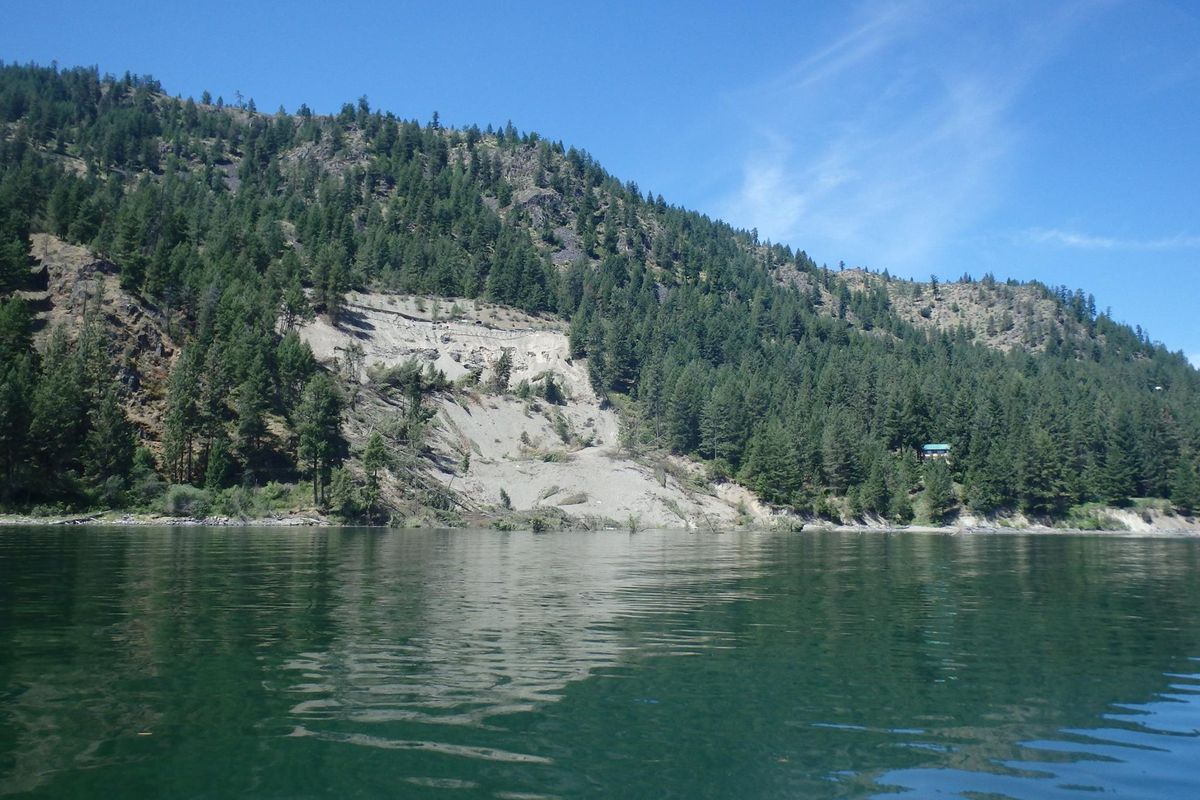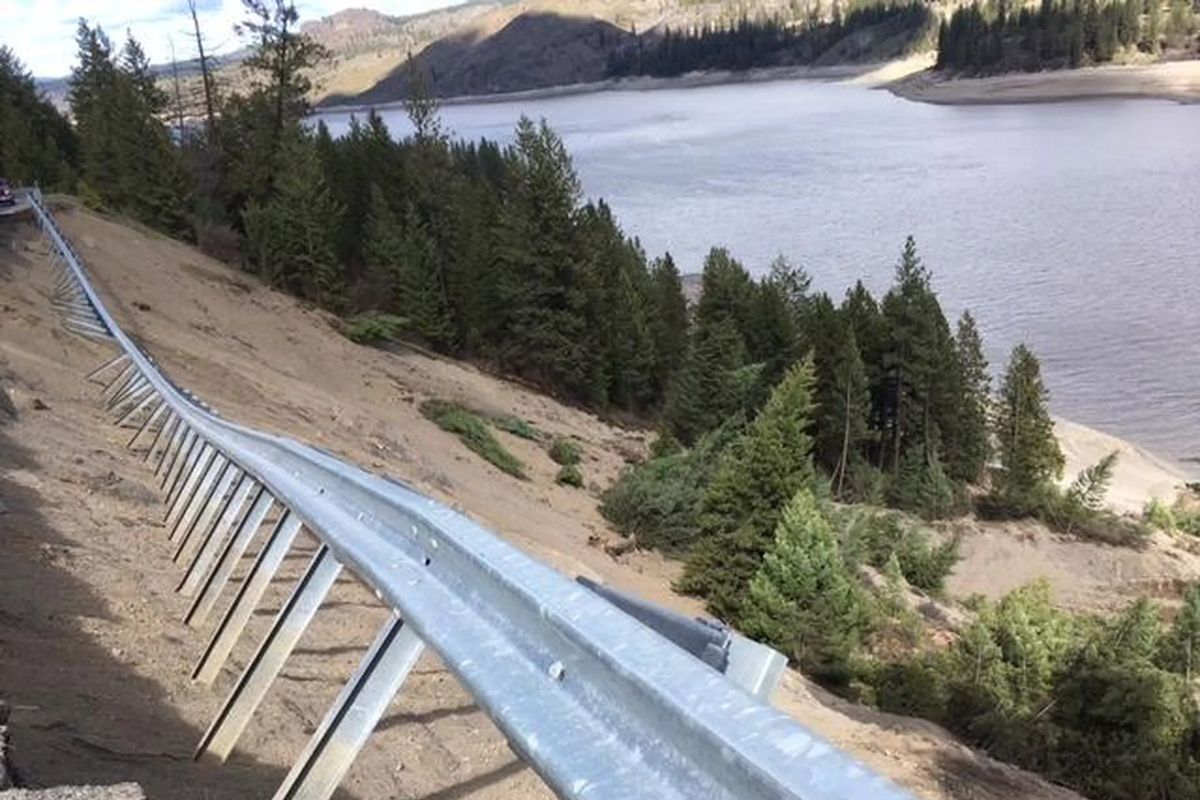Weathercatch: Recalling mysterious slippery slopes of April 2017
An April 2, 2017, a landslide, shown, on part of Porcupine Bay Road in northeastern Washington plunged downslope into Lake Roosevelt. (Courtesy Lincoln County Public Works)
Four years ago this month, nature came unhinged in Eastern Washington.
Landslides – commonly associated with the heavy rains and steep slopes of Western Washington – crashed down on our side of the state.
In April 2017, more than 100 landslides and ground failures were reported in eight counties across the region, according to the National Weather Service-Spokane’s Top Weather Events of 2017. weather.gov/otx/April_Landslides-2017/ Spokane, Asotin, Lincoln, Chelan and Stevens were among those counties impacted. Downhill surges of dirt, mud, rocks and trees blocked rural bridges, closed segments of roadways and redirected creeks. Fortunately, no lives were lost.
Landslides occur when masses of rock, soil or debris move down a destabilized slope. The steep terrain and many streams and rivers of Western Washington, along with some of the heaviest annual rainfall in the country, make the state particularly prone to these ecological hazards, according to the U.S. Geological Survey.
But the eastern half of the state isn’t known for prolific annual rainfall. The rainy Pacific Northwest? Not us. It’s not that landslides don’t happen here – in 2009, the Nile Valley slide in Yakima County demolished part of a state highway and blocked the Naches River – it’s that so many of them occurred in a single month.
So what caused all the landslides that spring? Probably an accumulation of meteorological events that began several years earlier.
The two-year period from 2014 to 2016 was an unusually warm period in our region. Smack in the middle of it, a significant widespread drought occurred in 2015, as well as the largest wildfire season in our state’s history. The ground was parched.
Then winter 2017 arrived, and it was cold. January opened with a big freeze, with temperatures running below zero on seven mornings during the first two weeks. What’s more, an Arctic air mass blasted through on Jan. 10, causing heavy snowfall and wind gusts up to 40 mph. The resulting blowing and drifting snow made parts of Eastern Washington look more like North Dakota.
In mid-February, another heavy snowfall was followed by warmer temperatures and rain showers. This led to flooding and washed out roads in parts of Eastern Washington, including Spokane, Lincoln and Adams counties. Spokane County declared a state of emergency.
Heavy precipitation continued through March, making it the second-wettest March on record for much of the region.
Then came April. As temperatures inched upward in springlike fashion, more rain fell and the heavy snowpack began to rapidly melt. Remember the terrain that was left parched from a previous year’s drought and wildfires? Research suggests that while heavy precipitation can trigger landslides, the risk becomes greater in areas withered by drought and wildfires. That’s because the altered soils can’t as readily absorb moisture. Consequently, water courses downhill, loosening soil, rocks and vegetation on its way – eventually destabilizing the slopes until gravity causes them to slide.
Chances are, this contributed to the many landslides we experienced in April 2017. Not only that, but heavy snow and rain fell on deeply frozen ground, exerting even more stress on the slopes.
And one more thing about April 2017. We were emerging from a climatic force known as La Niña, known for bringing higher precipitation and cooler temperatures to the Pacific Northwest. This April finds us in the midst of a waning La Niña as well.
Does this mean we should expect a litany of landslides in Eastern Washington this month? No. Although we had a few sizable snow dumps this winter along with a few springtime showers, our weather has been considerably tamer and drier than four years ago.
Consider that Spokane recorded 8.5 inches of precipitation during February-March 2017 – Some of it was snow and some of it rain.
During the same period this year, only 1.1 inches of precipitation fell. Also, we’ve seen very little flooding, and our ground soil is in better shape than it was four years ago.
———
Nic Loyd is a meteorologist in Washington state. Linda Weiford is a writer in Moscow, Idaho, who’s also a weather geek. Contact: ldweiford@gmail.com

